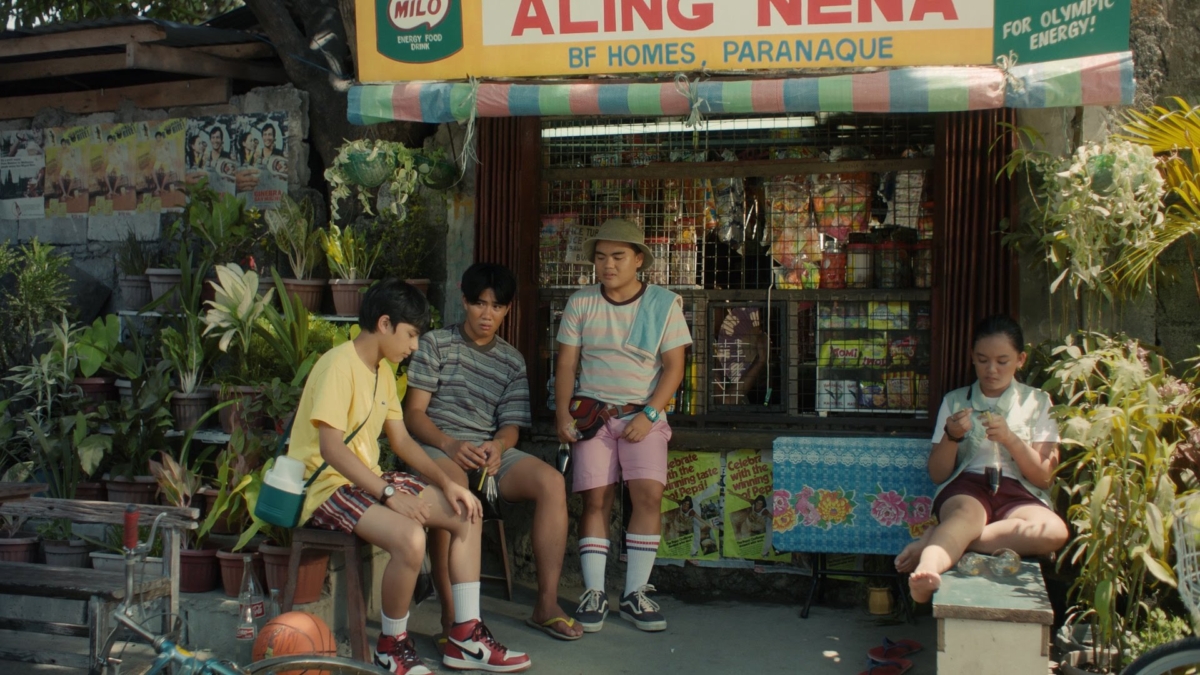And the volcano eruption. And the American occupation. And the —
Written By: Demi Guo
Valerie Castillo Martinez looks back on her childhood in the Philippines, to the first great change she experienced.
“The Death of Nintendo,” produced by Martinez and directed by Raya Martin, floods the screen with stark lighting, heavy-handed colors and so much pop culture to tell a coming-of-age story. Martin and Martinez, who grew up together in the Philippines, use their own childhoods to replay how a volcanic eruption knocked the power out. They then send a band of puberty-hitting pre-teens on a trip to get circumcised by a witch doctor.
“It’s like ‘The Goonies,’” Martinez said.
Straws
The episodic, character-driven film relies on atmosphere and imagery to throw back to what was a simpler time for Martin and Martinez, but also a time of change. Martinez wanted to anchor ‘Death of Nintendo’ around one memory in particular: The eruption of Mount Pinatubo in 1991, the second-largest of the twentieth century.
She remembers going outside her house in the Philippines and seeing the ash fall. “I’d only seen snow from ‘Home Alone’ … all those ‘90s movies,” she said. “I felt this spiritual experience that I was talking to this larger force, a glimpse into the future.”
The imagery of the film is really like taking a dive into childhood. There are more universal things, like biking onto a basketball court and buying pogs. Then, for a North American audience, there are things that are more distinctly Filipino — the pogs they buy are from an outdoor stand, where they also buy Cokes in plastic bags with straws stuck through them.
“Actually — they might still have them,” she recalled from her last visit to the Philippines. The government has considered banning them to reduce plastic use, but she still sees them on the street.
The imagery lends to a lot of atmosphere: The opening scene is a bedroom full of nighttime light, with the wind coming in through the curtains. One of the main characters, Paolo, is told a story about the ‘White Lady’ of Filipino folklore. This slice-of-life, horror flick style is one of many intentional homages to childhood. Martinez said she intentionally gave the film an episodic feeling, and my viewing certainly did make me feel like I was sitting down in front of a big television box in my living room, watching my teenage years playing in the style of a ‘90s commercial.
“You see some of those ‘90s films kind of getting revived now, like in ‘Stranger Things,’” Martinez said. “Stylistically, we wanted to celebrate pop culture.” It is present in the production design, costumes and even in the Tagalog slang. “If you were Filipino, you would recognize those expressions as being outdated.”
“Guilt of the Filipino”
Thematically, Martinez said, she enjoyed playing with the themes of duality and all the moving parts that made up not just the dynamic of the individuals, but also the Filipino identity as she sees it.
Her characters are young, up-and-coming adults of different backgrounds — which speak to classism, sexism and colorism. As with everyone’s childhood, they are friends despite the subtle ways their backgrounds make them different. But as they get older, those ways become less subtle, and the characters must make choices for their own growth. While these differences are matter-of-course for friends growing up in every society, they are also affected by the world around them.
On top of the eruption, 1991 was also the year United States forces began to withdraw from the Philippines after half a century of operations. “It speaks a bit to the colonial mentality that we’ve inherited,” she said. That includes classism related to whiteness, and the social status differences between the characters and their nannies, who are usually migrant workers from more rural areas of the Philippines. She included small nods to it, down to the Tagalog slang and English loan words that the characters speak.
Martin and Martinez both related deeply to their own nannies; in places like the Philippines, a nanny is often a second mother figure.
One of the greatest clashes is the difference between how Paolo’s nanny and mother treat him. “The mother bases her protection and beliefs on Catholic religion,” Martinez said. “The nanny is more empathetic to his ever-changing stage of development, and she encourages him to pursue his more creative ideas.” On top of the social implications, things boil down to what people perceive as good or bad for their children.
In a post-colonial world, Martin and Martinez emphasize community and culture in their film. “The guilt of the Filipino is that we allowed ourselves to be dominated by other people for so many centuries,” Martinez said. “It’s a society that wants order, but also wants to express itself freely, and a lot of that exists in very small ways among the kids.”
The death of Nintendo
Martinez did not expect to relate to Mimaw, the tomboy of the group of protagonists, the most. But as the film came to fruition, she grew into her. “I was kind of a tomboy growing up with my brother and his friends,” she said. “I was hesitant to expose too much of myself.” As this is Martinez’s first feature film, she herself dealt with a new challenge in her adult life: Expressing herself through Mimaw.
After completing this fun teenage romp, her ultimate message is about the first change people have to deal in order to be themselves. “Everybody has to grow up and grapple with growing pains,” Martinez said. “It’s part of life.”
“Death of Nintendo” makes its East Coast premiere at the 43rd Asian American International Film Festival. Ticket and screening information can be found here.

